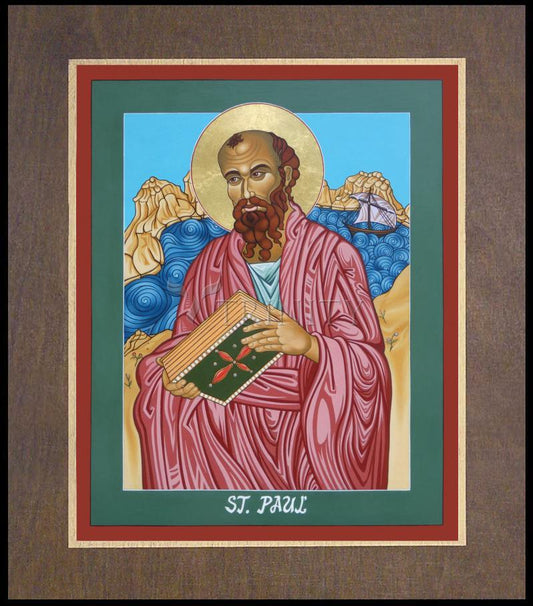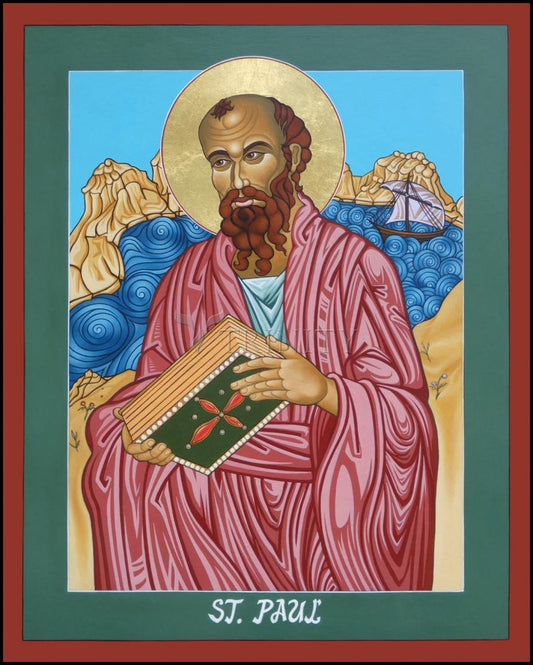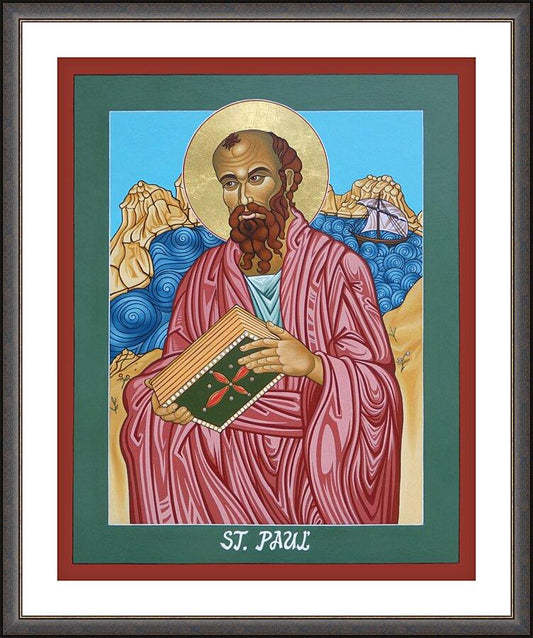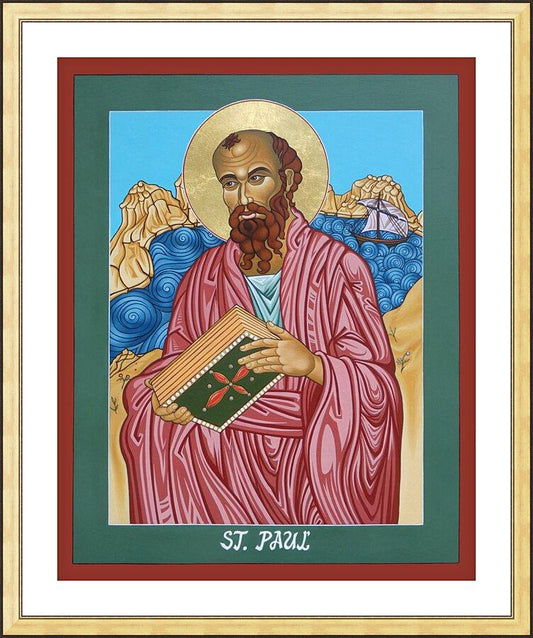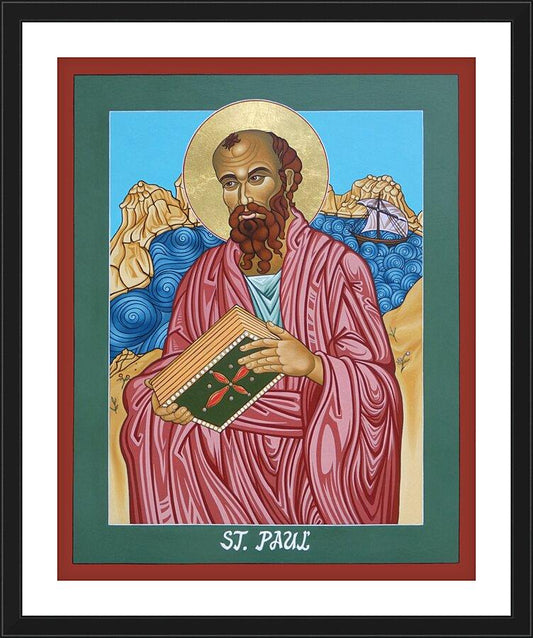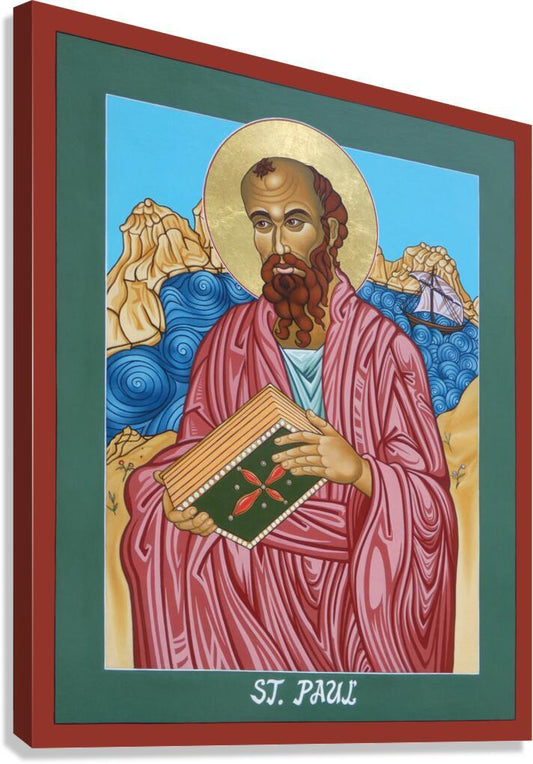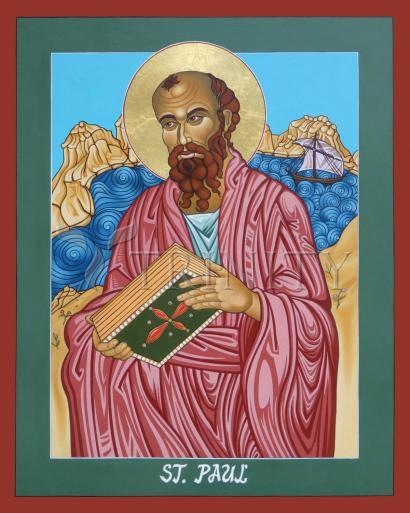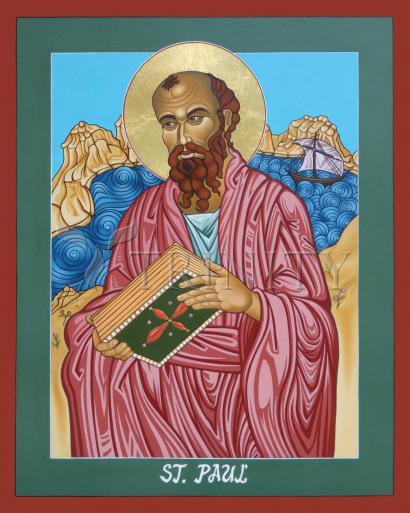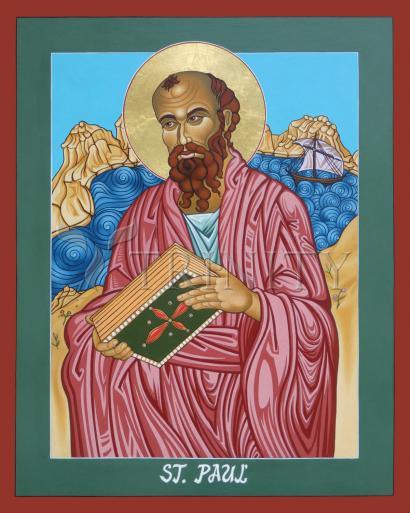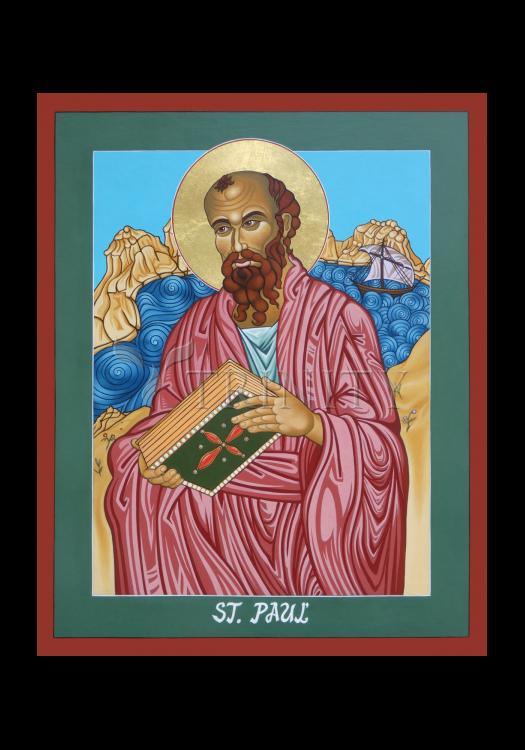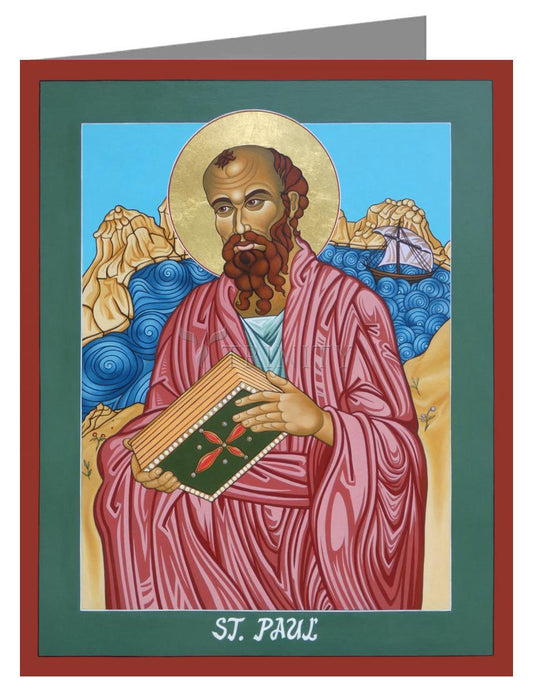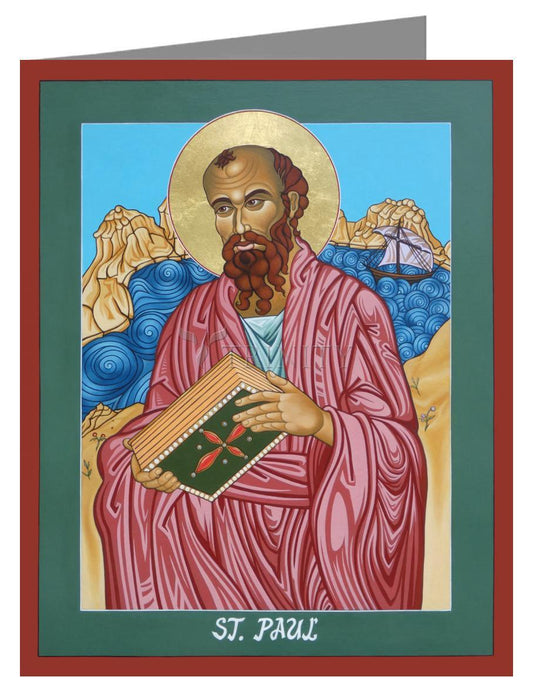St. Paul, The Apostle, had increasing trouble as he tried to integrate the new followers of Christ into his Jewish faith. Amongst many things, he was charged with defiling the temple by allowing Gentiles access. An enraged mob tried to kill him but Roman centurions intervened to save his life. He awaited trial the next two years for this in Caesarea. When a decision was made to have him returned to Jerusalem for trial, Paul exercised his right as a Roman citizen to be heard in Rome. This initiated the trip by ship to Rome in 60 AD and the shipwreck, the subject of this icon.
Malta, a tiny island off the Italian coast, was, after many stormy days at sea, where they finally ran the ship aground. Paul worked many miracles in Malta, and after three months, made his way to Rome where he was eventually beheaded sometime between the years 64 – 68 AD.
Paul, writing in 2 Corinthians 12, states he will not boast about all the wonderful things God has done for him. He describes instead his reason to boast of his weaknesses! So he would not become conceited, he believes God gave him a, thorn in the flesh, and told him, My grace is enough for you, for in weakness power reaches perfection. Paul emphasizes, Therefore I am content with weakness, with mistreatment, with distress, with persecutions and difficulties for the sake of Christ; for when I am powerless, it is then that I am strong.
This icon is offered in the prayer that you will find strength in your weakness.
His feast day is February 10.



